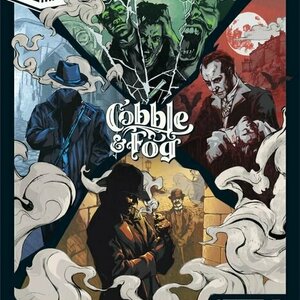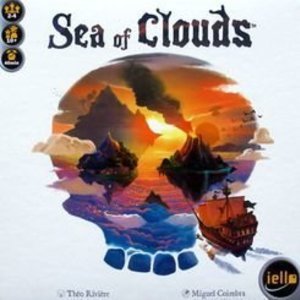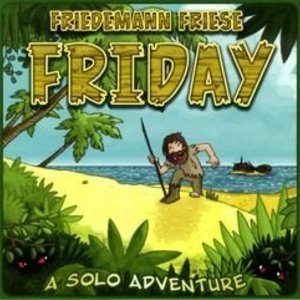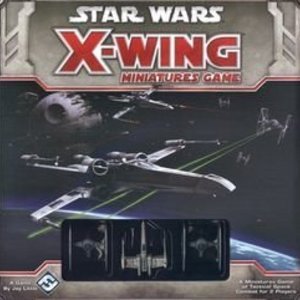Purple Phoenix Games (2266 KP) rated Gift of Tulips in Tabletop Games
Mar 2, 2021
Gift of Tulips is a game of choices. In it players are attendees at the festival attempting to gather the most beautiful bouquet of flowers for themselves as well as gifting some to friends. The winner of the game is the player who can best decide which tulips should be kept, which should be gifted, and which should be donated to the secret festival.
DISCLAIMER: We were provided a prototype copy of this game for the purposes of this review. These are preview copy components, and I do not know for sure if the final components will be any different from these shown. Also, it is not my intention to detail every rule in the game, as there are just too many. You are invited to download the rulebook, back the game through the Kickstarter campaign, or through any retailers stocking it after fulfillment. -T
To setup refer to the rulebook to adjust the deck of tulip cards per number of players. Shuffle this deck and place aside for now. Each player receives a scoring card, reference card, favorite color player cube, and two tulip cards from the deck. Per number of players set the appropriate Festival Cards on the table from 1st Place through 4th Place. Draw two cards from the deck and place the highest-numbered card under the 1st Place Festival Card and the lower valued tulip card under 2nd Place. Each player then looks at their dealt cards and decides which they would like to keep to start their personal bouquet and which they wish to donate face-down to the secret festival stack. The game is now ready to begin!
On a turn the active player will draw one card from the deck and then perform one action. Next they will draw a second card and perform a different action (not the same action as the first). The available actions are keeping a tulip for the bouquet, gifting the tulip to a friend, or adding a card to either the festival or the secret festival stack.
Keeping a tulip for the player’s bouquet is simply that: place the card face-up in front of the player and score immediate points depending on the tulip type’s position in the festival. This is also important when scoring for gifting. As tulips are added to their types in the festival, their placement in the festival can change. So while a purple tulip, for example, begins the game as the highest numbered tulip in the 1st position, another tulip type, orange maybe, may possibly overtake the 1st position cards by having a larger total value in tulips. When this happens, the newly-increased-in-rank tulip stack pushes the next highest into the lower position. Each position’s festival card will contain icons that award points for when that type of tulip is kept, given, and when majority of cards is owned at endgame.
Similarly, when a player opts to gift a tulip for an action, they simply choose an opponent (well, friend) and give them the card. By referencing the tulip type’s current position in the festival the player may score immediate points.
Lastly the player may choose to donate their tulip to the festival (face-up under the Festival Cards or face-down into the secret festival stack). By donating to the festival proper they will add the card to the appropriate type stack and adjust the total value and position within the festival. Should the player wish to add the card to the secret festival stack, they simply add it face-down.
Once all cards have been drawn and played from the deck the game is over and final scoring may begin. Firstly the secret festival cards are to be shuffled and five from this deck will be added to the festival proper to fine-tune some value adjustments (so that is why players may want to add to the secret festival during play). Once the five cards have been added players will address each tulip type by placement in the festival. The tulip type under the 1st Place card will score majority points to the player with the majority of that type of card (not value, but number of flowers). Similarly, the player with the second most of that type will score the second majority and so on through 4th Place. The player with the most points at the end of the game has won and will now owe the other players a bouquet of real flowers. Well, maybe not that last part.
Components. Again, this is a prototype copy of the game so components may be different as a result of a successful Kickstarter campaign. That said, this is a bunch of cards and some token markers (cubes in the prototype). The cards all feature incredible botanical artwork that is simply beautiful to behold. The card backs and Festival Cards all feature a lovely delftware pattern from the Netherlands. The artwork on this game is amazing and really colorful, like so many from Weird Giraffe Games.
But do I enjoy the gameplay? Absolutely. It reminds my wife and me of a great little game called Biblios where players are choosing where to allocate cards, and are not allowed to simply gobble them for themselves. Being able to adjust the market, if you will, is also a mechanic that I truly enjoy. A static market is fine, but those kinds of games are a little easier to abuse. Constantly shifting markets is where it’s at.
Being able to gift your opponents higher cards for those immediate points is new and clever, but you have to always be keeping track of the number of cards given per type. Obviously shuffling all your blue tulips to the same person may result in that person holding majority at endgame. But then again, there are ways to adjust the market to counter that. It is just so fun to think about and play.
I also am in love with the art. I mentioned this in my components review but I simply love the way this game looks. Art and theme go a long way with me, and this one certainly has both in spades.
So if you are a fan of beautiful games with a quick teach and light to medium gameplay, I urge you to check this out. The art and theme are strong, the gameplay is super solid and fun, and you feel great donating so many lovely flowers at the end of the game. If you are looking for that gorgeous game to complete your collection, or you need a game to fill that empty Netherlands slot in your collection, please consider backing Gift of Tulips. When you have a game that uses both orange and purple as main colors you KNOW it’s going to be great!
Purple Phoenix Games (2266 KP) rated Christmas Lights in Tabletop Games
Dec 29, 2020
Christmas Lights is a card game for two to six players that has each player attempting to organize their tangle of light strands into some sort of order. However, as the lights aren’t yet on players are working in the dark. Therefore players cannot see the lights they are untangling and will need help from other players along the way.
DISCLAIMER: We were provided a copy of this game for the purposes of this review. This is a retail copy of the game, so what you see in these photos is exactly what would be received in your box. I do not intend to cover every single rule included in the rulebook, but will describe the overall game flow and major rule set so that our readers may get a sense of how the game plays. For more in depth rules, you may purchase a copy online or from your FLGS. -T
To setup a game shuffle and place out the Event, Pattern, and Bulb card decks into their piles. Deal each player five Bulb cards face-down and two Pattern cards. Each player will also be given a random Character card and player aid card. Whomever is dealt the Santa character will be the first player. The players will consult their Pattern cards and choose one to begin working on initially. The game is now ready to begin!
On a turn a player has the opportunity to take four different actions, in their specific order: Play, Swap, Sale, and Refill. To Play one or more cards, simply choose it/them from hand and place it/them down to begin or continue the strand pictured on the first Pattern card in exact sequence order. Should a player wish to Swap cards with another player, they simply take the swap card from their hand and grab whichever card they please from an opponent’s hand to be placed in their own. Next the player may offer a card from their hand to be sold to other players during the Sale phase. Should another player wish to purchase the card, they spend not money but information to the seller. This information comes in the form of answers to yes/no questions about cards in the active player’s hand. Wait, why, you ask? Because player hands in this game are played facing away from the player, exactly like are played in Hanabi. That’s right, players do not see the cards in their own hands, but rather every other player’s hand. Once some or all of these phases have been played, the active player will need to Refill their hand back up to five cards. It is now the next player’s turn.
Each of these steps will need to be taken in order. Should a player not wish to Swap, for example, they may not hold a Sale and then decide to Swap afterward.
Some Bulb cards are special. These include the Broken Bulb, the Bubble Bulb, and the Plug. A player may place a Broken Bulb anywhere in their strand sequence as a temporary placeholder, but it will need to be covered up by the correctly-colored Bulb card in the future before the player is able to score the strand. The Bubble Bulb is essentially a Wild Bulb and can be played in place of any colored Bulb. However, once played it will remind the player to draw and play an Event card immediately. These Event cards may be either good or bad for the active player, so there is risk in playing the wild Bubble Bulbs. Once the first strand is completed per the appropriate Pattern card, the player will need to play a Plug card in order to connect their first strand to their next. Then the player will be able to begin work on their second strand.
Play continues in this fashion of blind play and deduction of held cards until one player successfully completes both of their Pattern cards. Every player will be able to take the same amount of turns, and if there is a tie between players the used Broken and Bubble Bulb cards will be taken into consideration to determine the winner.
Components. This is a card game. There are a lot of cards. The cards are all great quality, and though I have seen reports of flimsy stock or even see-through quality thickness, I have not had this issue (though I believe I have the second edition of the game, so that might be a difference existing between the editions). The art on the cards is very cute and endearing. Each color of bulb is also a different shape so our colorblind friends should have an easier time playing as well. Each card is laid out well and I have no complaints about components at all.
The gameplay is such that I believe players will either love or hate. Not being able to see the cards in your hand can certainly be stressful and frustrating, but it is a very light card game. Get over it. Again, if you have played Hanabi before, you know the feeling. But it changes the game so drastically when you have to remember what’s in your hand at all times, and when players are swapping with you left and right it is definitely easy to forget what’s going on in your hand. Not that I ever had that problem… Okay, it happens all the time, but I just laugh it off.
I do love this little game and am so happy I took a chance on it. Though I am still learning to love Christmas (Halloween is my jam), this game has a ton going for it. In addition to the game I have loosely described in this review Christmas Lights comes with a booklet that has rule sets for 12 different games that can be played with the included components. TWELVE EXTRA GAME MODES. That’s crazy! So when purchasing Christmas Lights people are actually purchasing 13 games in one box, with two of those modes being for Solo players. The variety and replayability here is off the charts and I am excited to play through the other game modes as soon as I can, and I know my wife will be into as well.
That said, having a Christmas-themed game that delights my wife and I equally is certainly something that I can easily recommend. Purple Phoenix Games gives this one a cheery 10 / 12 for its portability, variability, cute art, and great game play. If you see it in stores, pick up a copy. I am going out on a limb and saying that you could even play this game when it’s NOT Christmastime and still have a great experience with it. If you are looking for something a little different and like Hanabi but wish for something else, give Christmas Lights a shot. Hopefully you will find it as charming as we both do. Oh, and a little pro tip: pour yourself a mug of chai and grab a gingerbread cookie whilst playing. Not necessary, but it certainly works for us. Happy Holidays, ALL holidays, everyone!
Purple Phoenix Games (2266 KP) rated Unmatched: Cobble & Fog in Tabletop Games
Mar 19, 2021
In Unmatched: Cobble & Fog (which I will be calling Unmatched from here) players will be taking on the roles of either Dracula and his Sisters, Sherlock Holmes and Dr. Watson, Invisible Man, or Dr. Jekyll and Mr. Hyde in a battle to the death to claim victory in this, “Who would win in a fight”-style skirmish fighting game. The last hero standing wins, so as one of my favorite characters in literary history says, “The game is afoot.”
DISCLAIMER: Even though this review is for the Cobble & Fog version of Unmatched, the rules are the same throughout the entire Unmatched family of games. I have the original Unmatched: Battle of Legends, Vol. 1 and it plays exactly the same. I prefer the characters in this version, so that’s why I am reviewing it specifically. -T
To setup, the players will choose which side of the board they wish to play and set it on the table. Next, players will choose their hero and gather all accoutrements associated with their choice. All heroes come with a deck of 30 action cards, a mini of their figure, a character card, at least one health dial (more if their sidekicks have more than one health point), and some characters will have sidekicks that have tokens, or tokens for other reasons. The youngest player places their mini on the space with the number 1 on the board, and then the rest of the players place theirs on subsequently-numbered spaces. Players shuffle their decks of action cards and draw five cards for their first hand.
On a turn a player may take two actions from the choice of: Maneuver, Scheme, Attack. When a player chooses to Maneuver they will draw a card into their hand, then move the amount of spaces noted on their character card (typically two spaces). These movement values may be boosted by also discarding additional cards for their boost value and adding it to the number of spaces moved.
All action cards will specify which character may use it for attack, defense, or Scheme action. These Scheme cards have a lightning bolt icon on them to indicate that they are played face-up to the table, resolved, and then discarded.
Finally, if a melee-based character is positioned adjacent to an opponent, or if a ranged character is in the same zone as an opponent, they may Attack said opponent. To Attack, the active player declares which opponent will be attacked, and each player involved will choose cards from their hands to use in the battle. The attacking player will need to use attack or versatile (either used for attack or defense) cards to try to inflict damage, while the defending player will need to play defense or versatile cards in defense. The difference of the values printed on the cards will determine which character wins the battle and if health points are to be deducted from the health dial.
Many cards will have action instructions that trigger either immediately during battle or even after the battle concludes. Resolve these actions when appropriate and try to stay on your feet.
Play continues in this fashion of moving around the board to gain cards or using the cards to scheme or attack/defend. The winning player is they who survives at the end and vanquishes all foes on the board.
Components. I love everything about the components in this game. The box is great. The insert is really incredible and well thought out. The cards are great quality and the game features spectacular art all around. The minis are cool and luckily are fitted inside colored bases to remind players which mini is theirs. The sidekick tokens are excellent thick plastic and color-matched to the bases of their hero counterparts. The board is nice and double-sided, and all the rest of the cardboard components are excellent.
It’s no secret here – I absolutely love this game. I have always been a big fan of Sherlock Holmes, and this set also includes other interesting characters to play. Each one is highly unique in style and that’s one of the reasons I am so intrigued by this system. I say system because this is not the only game in the Unmatched family. As of today the Unmatched system boasts all of these as playable characters from different sets: King Arthur, Alice, Medusa, and Sinbad from the “Battle of Legends, Vol 1” set; Robert Muldoon and raptors from the “Jurassic Park, InGen vs Raptors” set; the “Robin Hood vs Bigfoot” set; Bruce Lee; and Buffy, Spike, Willow, and Angel from the “Buffy the Vampire Slayer” set in addition to these here. I know more Jurassic Park sets are on the horizon, and I just cannot wait to see what other sets will be released in time.
Why do I love this game so much when I am not really a fan of moving and dueling games (I’m looking at you Mage Wars)? In these style of games I feel the movement is unnecessary as I just stand and fight. In this system, the only way to draw more cards from your deck is to enact the Maneuver action. There have been several times where I didn’t necessarily want to initiate a battle, but I saw opponents sitting with no cards in their hand. That means no defense cards can be played. Easy chunks of health taken by picking off the stationary few. Unmatched forces players to move around and I love that. Yes, there are opportunities to unleash giant blows or have double-digit health drops in battle, and that’s just delicious. Also there are times during play where mathing out exactly where to place your mini or sidekick is paramount to lay plans of ambush.
I mentioned earlier that I knew right away I would love this one. Opening the cover of the rulebook sold me immediately. As this set utilizes literary characters found in old timey Europe the game utilizes a period art style as well and I’m still fawning over it. Everything clicks for me and I can now understand why so many people were dying (not literally) to get copies of the game Unmatched is based on, Star Wars: Epic Duels. It is extremely fun and each character is interesting and unique. Purple Phoenix Games gives this one a well-earned GOLDEN FEATHER AWARD! If you need a skirmish style game with excellent theme and art, you must grab this post haste. If you and I fall on the same side of the coin with our gaming preferences you NEED to have this in your collection.
I don’t know how many other sets I will be looking to add to my collection at this point, but I cannot tell you how excited I would be to pit Bigfoot against Bruce Lee. Or King Arthur against Dracula. It just feels epic and wonderful. Great job to the team at Restoration Games. This is a huge win for my collection.
Purple Phoenix Games (2266 KP) rated Sea of Clouds in Tabletop Games
Sep 5, 2019 (Updated Jul 1, 2020)
In Sea of Clouds, players are Captains of mighty air pirate ships. That’s right – flying pirate ships! Just like the pirate days of yore, your goal is to recruit the best crew, plunder for treasure and relics, and find the best rum along the way. But be careful because your rival pirate Captains have their eyes on the same prize – so make sure you’ve got a way to outsmart them and sail your way to victory!
Sea of Clouds is a game of card drafting, set collection, and push your luck in which players are trying to amass the most end-game victory points. Played over a series of rounds, players take turns drafting cards, performing bonus actions, and engaging in combat with their neighboring Captains. To setup, each player takes their chosen Captain board, the central board is placed in the middle of all players, and 1 loot card is placed face-down on each of the 3 loot spaces on the central board. The remaining cards are shuffled and create a draw pile. Now you are ready to play!
Each round consists of divvying up shares of loot between all players. On your turn, you will take the face-down card(s) in the #1 loot spot and look at them secretly. Decide whether you want to take the share, or leave it and look at the next one. If you decide to keep the card(s), add them directly around your Captain board in their corresponding spaces. If you decided to leave the share, add 1 card from the top of the draw pile to that share, and then look secretly at the cards in the #2 loot spot. Proceed in the same manner as before with the cards in the #2 and #3 loot spots, if necessary. If none of the shares catch your fancy, draw 1 card from the top of the draw deck to add to your ship. Play continues to the left, and once everyone has had their turn, move the round marker ahead on the central board, and continue on to the next round in the same fashion. At the end of certain rounds of the game, following the divvying of shares, there will be a boarding/combat turn – players will compare the combat strength of their crew (recruited during the divvying of shares) to that of their neighboring Captains. If your crew’s strength is greater than your neighbor, resolve any rewards/effects on your pirate cards. If your strength is less than your neighbor, you lose the combat and do not collect any rewards. Once all combats have been resolved, everyone discards all their crew cards, and the next round begins. At the end of the game, players count up their victory points, and the player who has amassed the most is the winner!
I’m going to get right to the spoilers and say that I love Sea of Clouds. It has some of my favorite mechanics (set collection and card drafting) and it is easy to teach, learn, and play. Do not let the simplicity of play fool you, however, because strategy is definitely a key to victory. One thing that takes this strategy to the next level for me is that there will be times when all players know what cards are in each share of loot. You’ve got to pay attention to which shares your opponents are taking, and figure out a way to stop them from collecting complete sets, or try to force them to collect a share they may not necessarily want. Also, as shares go unclaimed, they get more cards (and eventually money) added to them, so you have to weigh the risks of collecting a share because of one specific card, even though there may be a ‘bad’ card in that share for you. You always have to be adjusting your strategy based on what cards show up in each share, so there is no idle time for any player in this game.
Another neat thing I like about the strategy of this game is that all the cards have backs based on their card type. So all Relic cards have the same back, all Crew cards have the same back, etc. Even though you may not know what is on the other side of the card, you might just take a chance on a share of loot because it has the card types you are trying to get. That’s where the push your luck comes in, because until you look at a share of loot, you aren’t sure if that card is the one you need. Maybe share #1 has a couple cards you could use, but share #2 has a relic card that could be the final one in your set! Are you willing to risk passing up a decent share of loot to see if the next share has what you need? Or maybe the top of the draw deck has the card type you want – would you pass up all 3 shares of loot for one blindly draw card in hopes that it is to your benefit? There is no single ‘right’ way to play, and that is what makes this fun.
The only drawbacks of this game for me are the boarding/combat turns. I like the idea of this player interaction, but it doesn’t always work fairly in my opinion. At the end of each boarding/combat turn, all players discard all of their Crew cards, and you have until the next boarding phase to recruit a new crew. And sometimes, just based on the luck of the draw, you just never get the opportunity to hire anybody. Maybe your opponent takes the share with a Crew member before you get a chance to, or maybe the deck just isn’t evenly shuffled enough to get enough Crew cards out into the playing field. So if you have no Crew, you automatically lose the combat, and that can be detrimental to your strategy – opponents could steal or discard some of your cards, and cause you to lose end-game points. Maybe if there was a draw pile where you could pay a certain amount of gold to hire a Crew member, that would make the game feel a little more fair in the combat department. But ultimately, you’re at the mercy of the luck of the shuffle/draw, and sometimes it just doesn’t balance out.
All in all, I think Sea of Clouds is a great game. It’s a relatively simple game, but one that still requires strategic thought. The push your luck element feels unique in this game because you don’t really lose anything if your luck runs out, you just don’t necessarily get as far as you wanted. The game itself is pretty to look at – the artwork is very well-done and the colors really pop and draw the eye to the cards. This may not be in my Top 10 of favorite games, but it’s one that I will definitely be keeping in my collection. Take a chance on this one if you haven’t so far – it might surprise you. Purple Phoenix Games gives Sea of Clouds a high-flying 12 / 18.
Purple Phoenix Games (2266 KP) rated Friday in Tabletop Games
Jun 12, 2019
Picture this – you live on a tropical island. One day as you’re walking down by the ocean, you see something on the shore. As you approach, you realize it is a grown man! Turns out this castaway is Robinson Crusoe. You decide to help Crusoe learn the ways of the jungle, combat hazards, build up his strength, and eventually escape your island via a nearby pirate ship. The island is a rough place, though, so you must be diligent in your guidance! Otherwise your newest comrade may not survive…
A cute little card drafting game of survival on a deserted island – how hard can it be, right? I seriously underestimated how tough this game actually is – I have never won a game to date. The premise of the game is simple enough (draw cards, overcome hazards, and build your deck), but successful execution is the tricky part.
It all really comes down to the luck of the draw. Some cards are excellent for fighting hazards, while others can seriously negatively impact a fight. Success or failure depends on how well you shuffle and where the cards end up in your draw pile. That is to be expected though – if all the cards were helpful, the game would be so easy! The balance (or should I say imbalance?) of positive and negative cards is what makes the game so difficult. There are almost as many negative cards as there are positive, which makes every fight feel completely random to me. It is hard to strategize because each turn is almost a 50/50 shot as to whether your next card is positive or negative. The game is supposed to last 3 phases, but I am lucky to survive into phase 2.
Friday will stay in my collection, for the time being, while I continue trying to formulate a working strategy. Overall, though, it is not my go-to solo game. Purple Phoenix Games gives it a 8 / 12. (Josh and Bryan haven’t played it yet!)
https://purplephoenixgames.wordpress.com/2018/12/12/friday-a-solo-adventure-review/

Shopify POS: Point of Sale
Business
App
Easily sell your products and accept payments at markets, pop up shops, in-store, and anywhere else...
Micah Ulibarri (79 KP) rated Star Wars: X-Wing Miniatures Game in Tabletop Games
Mar 27, 2018
There are a lot of ins and outs. While the basic game is the same, being familiar with the cards, ships, pilots, mods, etc can definitely give you a boost over a less knowledgeable opponent.
I love flying the ships. I am a huge Star Wars fan so getting to use my knowledge of Star Wars in a competitive and strategic way is the best of both worlds.
The miniatures look great and the art on the cards is always cool. There are also additional and rare cards you can get from participating in and winning tournaments.
There is a large and fun community based mostly around comic and game shops that play this game. There is also an annual competition that is very high stakes. (I have never been.)
Finally, though it can be a costly game to get into, when compared to most miniature games, it is probably one of the least expensive and the start up cost is only $40.
All in all, the main thing I want from this game is to get to play it more. And that's on me.

Animal 4D+
Education and Entertainment
App
Updates: - Multi languages: English, Spanish, Turkish, Japanese, Bahasa, Deutsch, Mandarin, Korean,...

RetailMeNot: Coupons & Savings
Shopping and Food & Drink
App
Get the best prices and cash back offers for your favorite shops and retailers – both in store and...

Times Tables Pro
Education and Games
App
• Featured by Apple as "New & Noteworthy" in more than 200 places Times Tables Pro is the...





